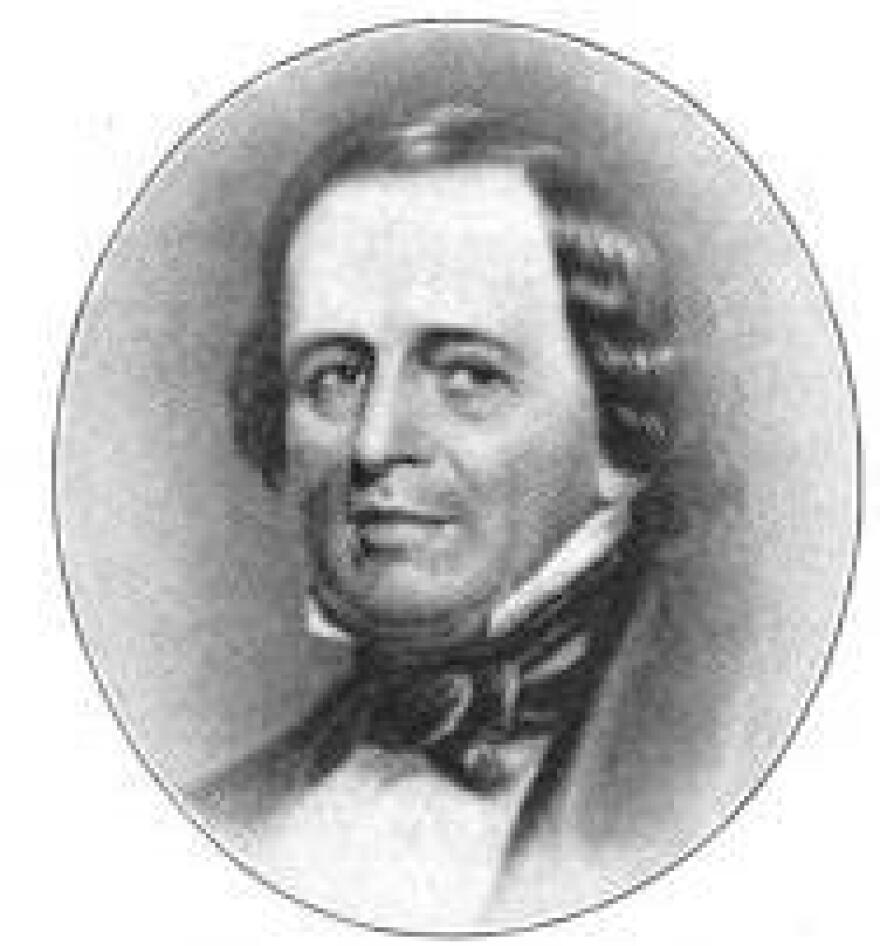When Adrian Brown moved from Iowa to Royal Oak five years ago, he noticed something funny about a road he uses every day.
John R Road is just that — "John R."— one initial — no last name.
“I have always wondered why it was called 'John R Rd', rather than 'John Rogers Road.' Why just an 'R' and not a full name? I've never seen that anywhere else that I've lived,” he said.

So Brown came to M I Curious and asked the question:
Who was John R Rd named after?
I looked into it and found out that the road is named after Detroit’s first elected mayor, John R. Williams.
In prior years, the city’s mayors were appointed, not elected.
Williams served as mayor from 1824 to 1825, then again from 1829 to 1830, and then yet again from 1844 to 1846.
(Support trusted journalism like this in Michigan. Give what you can here.)
The reason the road is “John R,” and not say “John Rogers,” is because the “R” in Williams’ name doesn’t actually stand for anything at all.
“He was named John Williams, and there happened to be another John Williams in Detroit,” said Joel Stone, a senior curator at the Detroit Historical Society. “So he named himself John R. Williams. This was an up-and-coming fad: giving yourself a middle initial.”

Williams was born in Detroit in May 1782. He served in the Army from 1796 to 1799. When he left the Army, he returned to Detroit.
Shortly after, he went to Montreal to buy supplies for a trade partnership with his uncle, Joseph Campau, and was jailed for several months after he shot and wounded Sieur La Salle during a fight, according to Stone. He returned to Detroit when he was released from jail and continued with his business plans.
Williams was one of the first University of Michigan trustees. He was president of the Detroit Board of Education, and a delegate to the first Michigan Constitutional Convention.
According Stone, Williams began his time as mayor when Detroit was quickly growing.
“This is about the time Detroit is expanding from a frontier size to larger town as people are coming into the city following the War of 1812,” he said. “Between 1820 and 1830, Detroit almost doubled in size. Between 1830 and 1840, it more than tripled in size. Detroit was growing fast. People were building roads, and they needed people to name them after.”

Consequently, many of Detroit’s most well known roads are named after early influential Detroiters.
“Most of the people whose names are represented downtown — Woodward, Bagley, Bates — were still alive when the street was named for them,” Stone said. “There was [and] is no hard-and-fast rule for naming streets. The city was growing fast, and if you were a sitting politician or prominent businessman, you could have a street named for you, your friends and family.”
Williams named “John R Rd.” himself. Stone said he also named some other ones. His daughter, Elizabeth, is the namesake for Elizabeth Street. Columbia Street is named after a street he lived on in Albany, New York, and Forest Street was named for his niece.
“One of the really neat parts about any street, any city are the street names that relate to its early history,” Stone said. “If you really want to dig into a city’s history, you find the streets that have people’s names on them, and you dig into the history of the people and understand the history of the city better.”
Territorial secretary, Michigan’s second governor, and U.S. Senator William Woodbridge named a number of streets after his family, and the Woodbridge neighborhood is also in his namesake.
The first chief justice of the Michigan Territory, Augustus Brevoort Woodward, also authored Detroit’s new city plan after a fire in 1805 destroyed much of the city -- and now, Woodward Avenue is named after him.
And Cass Avenue is named after Lewis Cass, who was governor of the Michigan Territory from 1813 to 1831, and a U.S. Senator representing Michigan from 1849 to 1857. Cass named Selden Street after his mother-in-law’s maiden name, and Spencer Street after his wife’s maiden name.
Click below to see where some of these places are:










